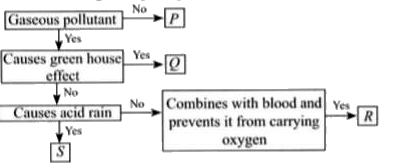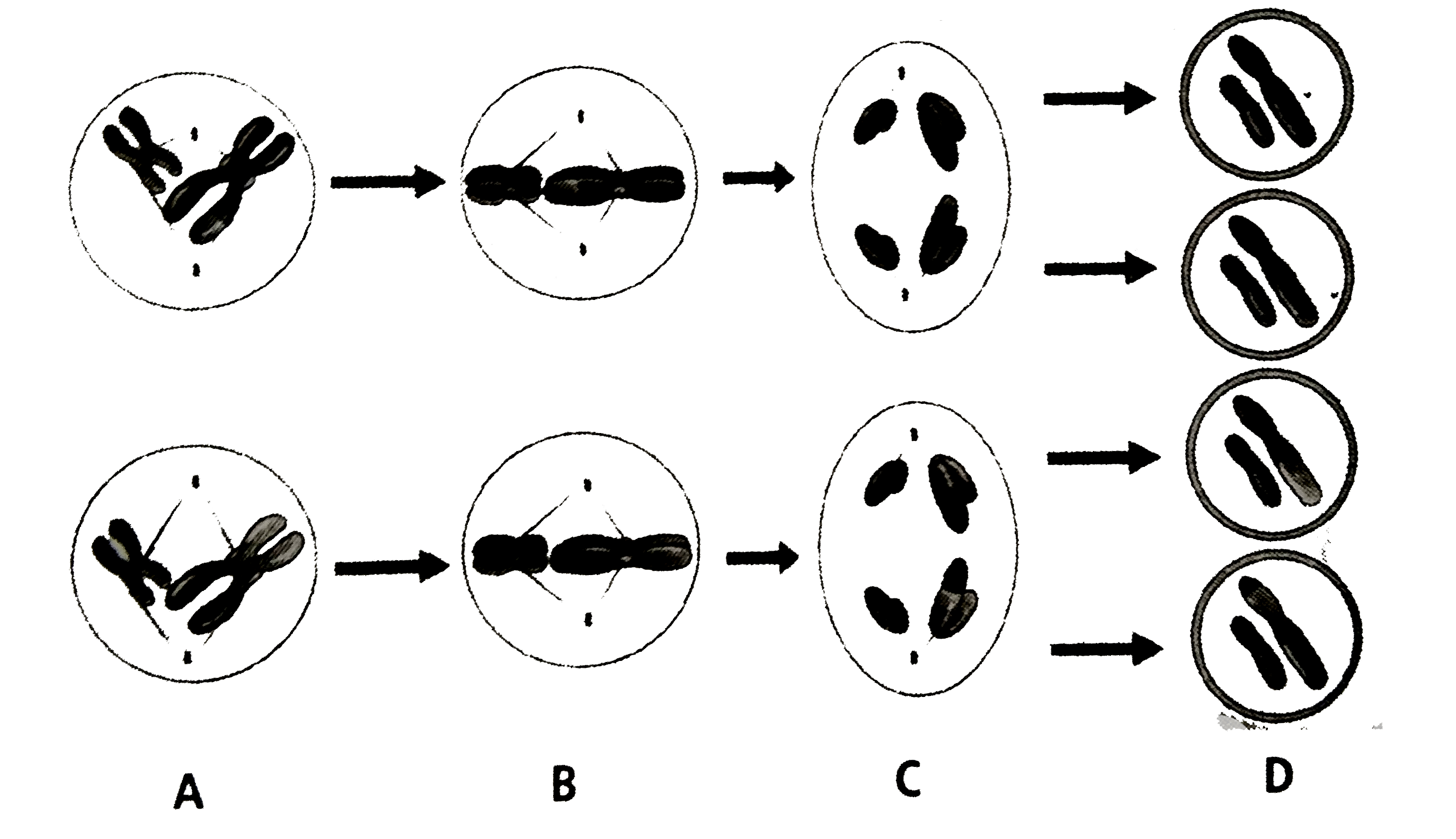Refer to the given table and select the incorrect statement.
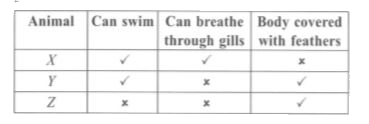
A
X could be an animal whose body is covered with scales.
B
Y could be an animal that breathes through blowholes.
C
Z could be an animal that has hollow bones to make its body light.
D
Body of animals X, Yand Z could be streamlined.
Video Solution
Text Solution
The correct Answer is:B
In given table, animal X can swim, can breathe through gills and its body is not covered with feathers, hence it can be a fish. Fish has scales. Animal Y can swim and its body is covered with feathers, but it cannot breathe through gills, hence it can be an aquatic bird. Birds do not have blowholes. Blowholes are mostly seen in aquatic mammals like whales. Animal Z has a body covered with feathers but it can neither swim nor it can breathe through gills, hence it can be any non-swimming bird. Birds have hollow bones to make its body light Animal X and Y can swim and animal Z can fly, hence all of them must have streamlined body.
|
Topper's Solved these Questions
- NSO QUESTION PAPER 2020-21 SET ABOOK - SCIENCE OLYMPIAD FOUNDATION CHAPTER - NSO QUESTION PAPER 2020-21 SET AEXERCISE - ACHIEVERS SECTION
3 Videos
- NSO QUESTION PAPER 2019-20 SET ABOOK - SCIENCE OLYMPIAD FOUNDATION CHAPTER - NSO QUESTION PAPER 2019-20 SET AEXERCISE - ACHIEVERS SECTION
4 Videos
- OUR ENVIRONMENTBOOK - SCIENCE OLYMPIAD FOUNDATION CHAPTER - OUR ENVIRONMENTEXERCISE - Achievers Section (HOTS)
5 Videos
Similar Questions
Knowledge Check
Refer to the given figure and select the correct statement.
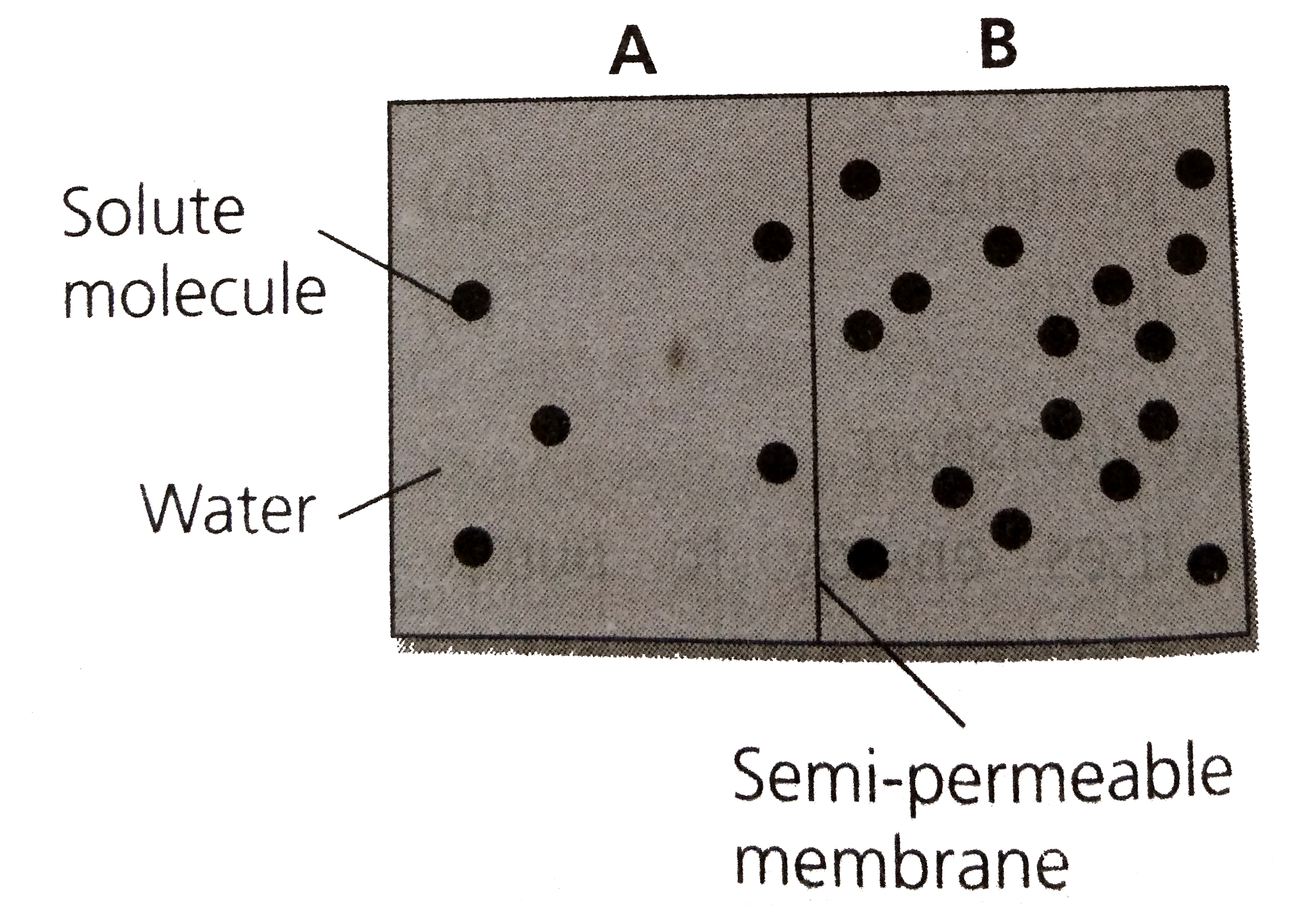 ASolution of chamber B has a lower water potential than chamber A.BSolution of chamber A has lower solute potential than chamber B.CSolution of chamber Bhas lower solute potential than chamber A.DBoth (a) and(c)
ASolution of chamber B has a lower water potential than chamber A.BSolution of chamber A has lower solute potential than chamber B.CSolution of chamber Bhas lower solute potential than chamber A.DBoth (a) and(c)Refer to the given figure and select the incorrect statements regarding this.
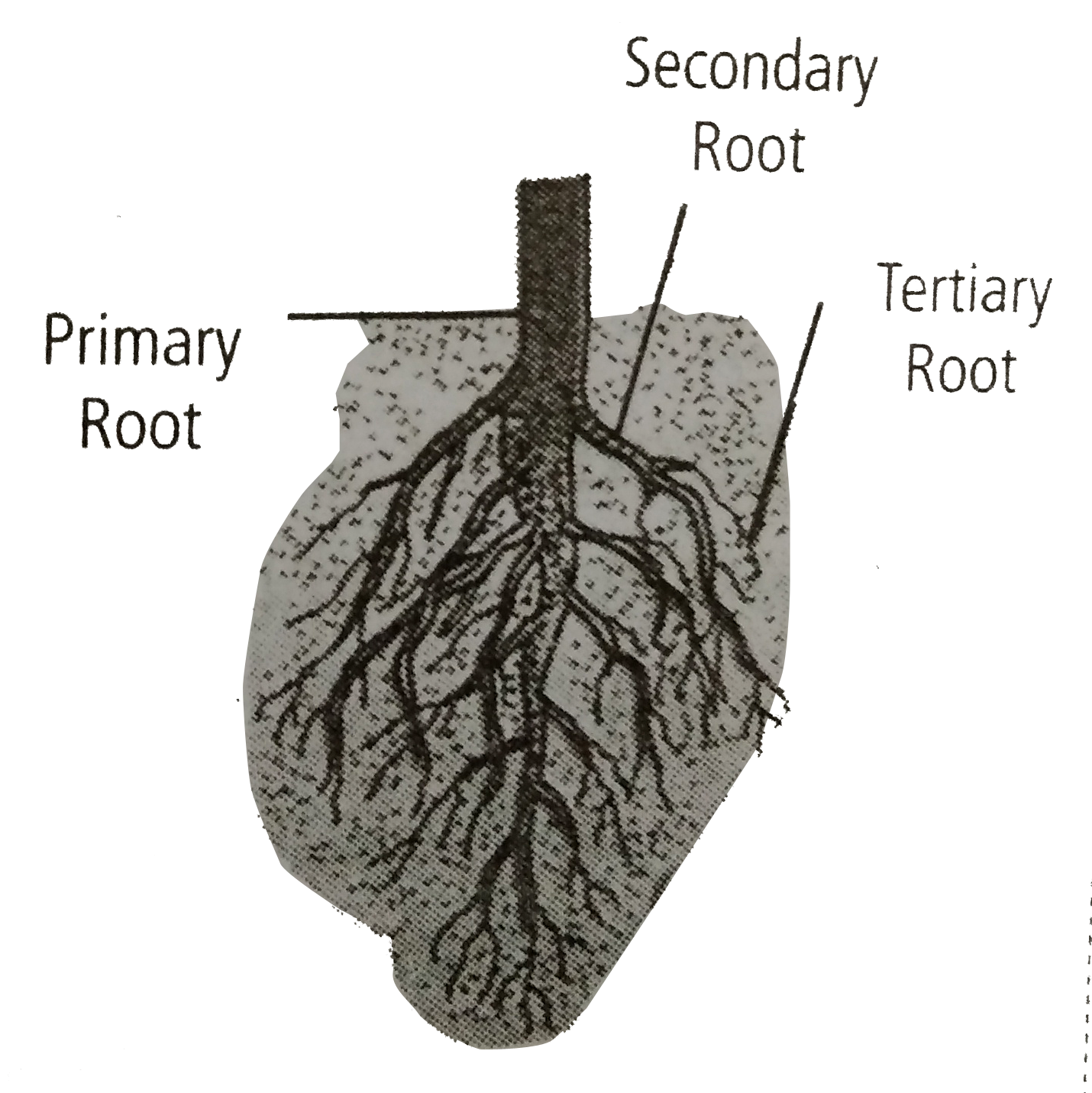 Athis type of root system develops from radicle of embryo.BLateral roots arising from the main root are exogenous in origin.CRootlets are the ultimate root branches that bear root hair for absorption.DSecondary and tertiary roots are borne in acropetal succession.
Athis type of root system develops from radicle of embryo.BLateral roots arising from the main root are exogenous in origin.CRootlets are the ultimate root branches that bear root hair for absorption.DSecondary and tertiary roots are borne in acropetal succession.Select the incorrect statement(s).
AIE(I) of nitrogen atom is less than IE(I) of oxygen atom.BElectron affinity of oxygen is less than selenium atom.CElectronegativity on Pauling scale is 2.8 times greater than electronegativity on Muliken scale.DThe Cr6+ is smaller than Cr3+

